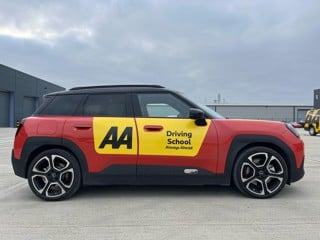New statistics released by Arval show how the company has made significant strides in safety on its own company car fleet – recording a new, record low incident ratio of just 14.1%.
This compares to a 40% figure for the vehicle leasing and fleet management specialist in 2006 – something that inspired a focus on fleet safety that has now covered a decade.
Over the same time period, the number of incidents recorded annually has dropped from 146 to 24 while the total cost of collisions has reduced by three quarters - from £ 98,970 to £25,900.
Tracey Fuller, engagement manager at Arval, explained: “The 14.1% incident ratio is proof that investing in a sustainable safety programme pays off. While it is not the only measure that should be used for fleet safety, it does give a good idea of the overall performance of a fleet.
“We are releasing these figures because they show that the fleet safety advice we provide to fleets works in real world conditions and our own story is clearly proof of this principle.
“We believe that when it comes to fleet safety, it is a question of getting the basics right – recording accurate data about incidents, drivers and vehicles, then putting measures in place to bring about improvements.
“These might range from education campaigns about specific aspects of road safety through to monitoring the on-road behaviour of drivers and providing appropriate training to those whom it will benefit.
“None of these ideas are ground-breaking. Instead, it is all about ensuring that safety is placed at the heart of your corporate responsibility commitment and that effort is placed on ensuring it is a subject that remains fresh and engaging.”
Fuller added that she was confident that the incident rate on the Arval fleet, which currently numbers around 200 vehicles, could be driven still lower.
“Our experience is that, across many fleets with which we work, there is no limit to the effectiveness of these strategies,” she said.
“Where they are implemented with a genuine commitment from the board and effective policies, interventions and strategies to improve safety, incident ratios should continue to fall as the safety culture of the business grows.
“Certainly, we use best practice that we have learnt from our own fleet experience with customers all the time, and we are also able to use our own drivers and vehicles to test out ideas before suggesting them to others. It is an arrangement that works for everyone.”





















Login to comment
Comments
No comments have been made yet.